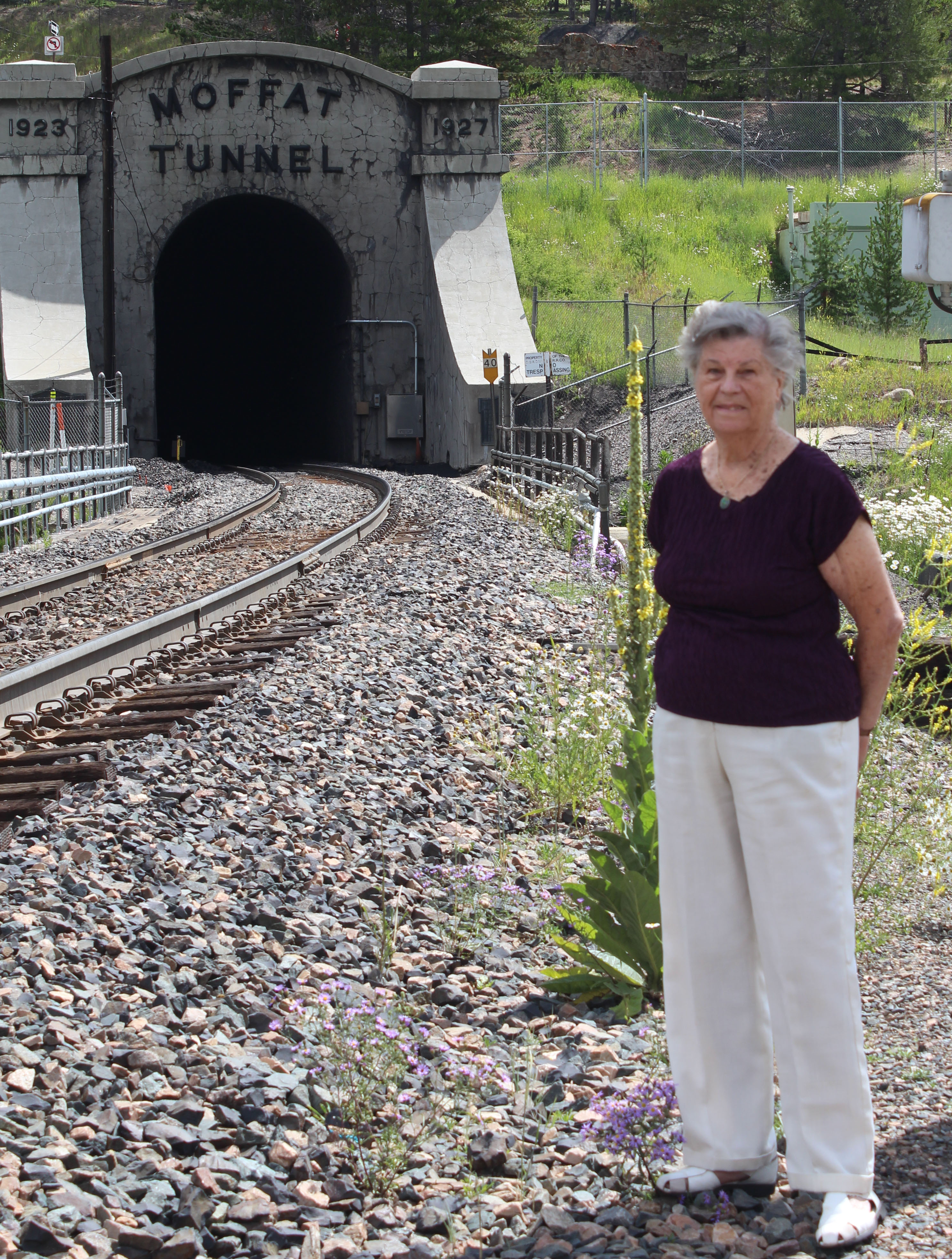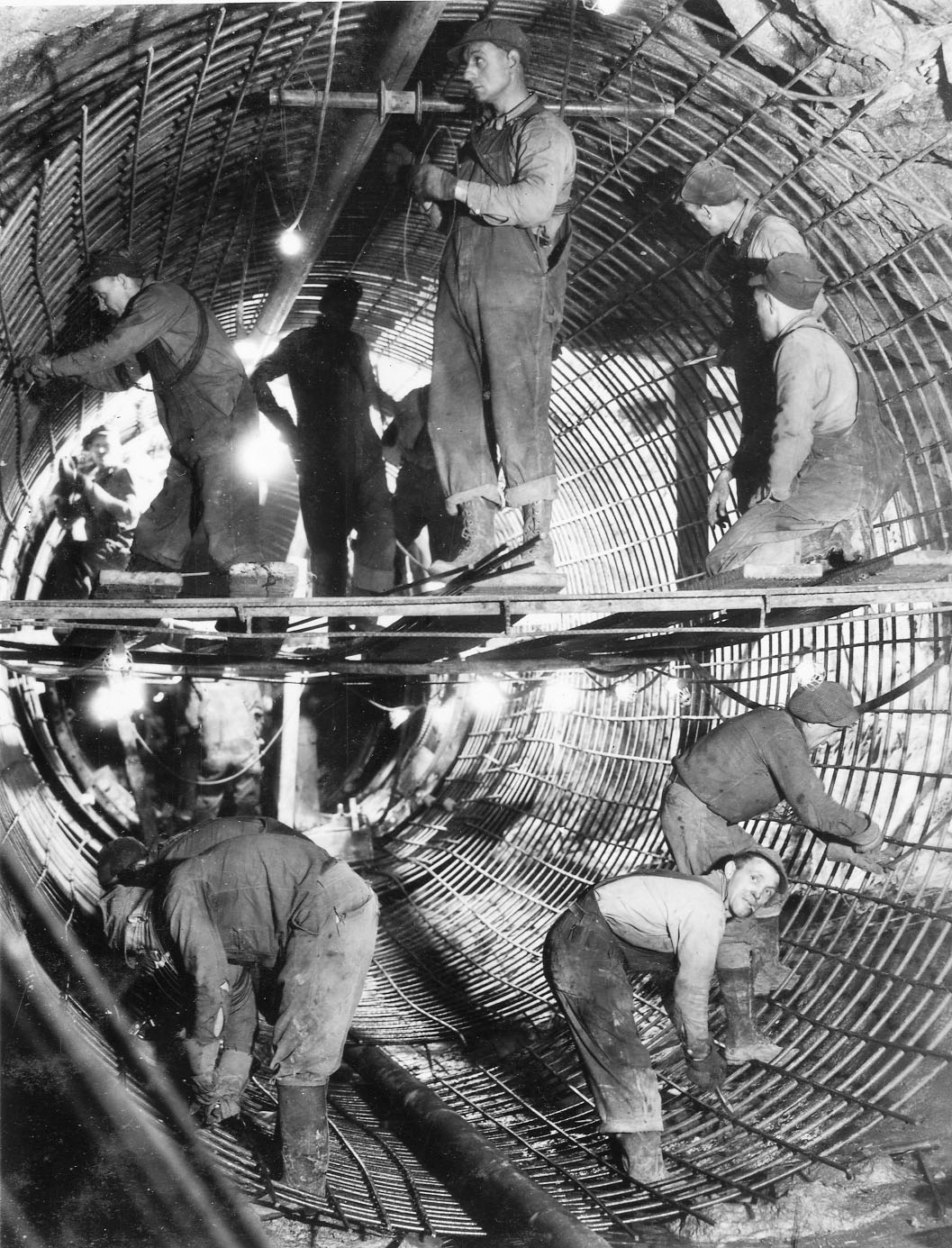
Back to Moffat Tunnel, eight decades later
_HJQw
As a little girl, Gloria Ryan and her friends used to sneak inside the Moffat Tunnel and put their ears to the tracks, listening for an approaching train.
Eight decades later, at age 92, she was back at Moffat, only this time on the train, taking one final journey through the tunnel that her father helped to build in the 1920s.
In August, Rryan boarded Amtrak’s California Zephyr to complete her journey through the tunnel to its western portal in Winter Park, Colorado. At the tunnel entrance, she stepped out into the crisp mountain air and talked about her father, Paul Hansen, who brought his family to vacation nearby after the construction.
“I’m thinking of my father. I miss him every single day,” Ryan said. “I was always proud of him. I think of how special he was to me, and how proud he was to have worked on the tunnel.”
And for good reason. The 6.2-mile railroad tunnel is a critical transportation link in Colorado that crosses under the Continental Divide.
The mountain passageway was the vision of David Moffat, a Denver railroad pioneer, who saw the need for a safer, more efficient route between Denver and Salt Lake City. Moffat pushed his vision through the Colorado legislature and — with the help men like Paul Hansen — the tunnel was completed in 1928. Twenty-six men died during the construction.
Their work has stood the test of time. Passenger and freight trains still use the tunnel nearly 90 years later. “It really is an engineering marvel,” Ryan said.
Moffat Tunnel also is an important part of Denver Water’s story. A water tunnel runs parallel to the railroad tracks. It was the original shaft workers used to access the main tunnel and also served as an escape route during construction.
Denver Water acquired the original tunnel in the 1930s and turned it into the utility’s first trans-mountain water diversion structure. It delivers water from the Fraser and Williams Fork River basins under the Continental Divide and on to the Moffat Treatment Plant in Lakewood, Colorado.
“The tunnel was good for the entire country and good for Colorado,” Ryan said.
Paul Hansen was an electrical engineer when he worked on the tunnel project, but later became a lobbyist for Denver Water, fighting for safe and clean water, his daughter said.
Ryan got married in 1944 and had eight children with her husband. His career took them across the east coast and to Thailand. She now lives in Virginia. As she grew older, Ryan found herself yearning to come back to Colorado, to honor her father and to highlight the determination, ingenuity and sacrifice of the men who built a structure that she believes transformed the American West.
“I think children can see this and learn what man can do,” she said. “I hope they will see that engineering is a proud profession and we need to build things with dignity and respect for the environment.”
With her mission accomplished, Gloria was ready to head home. “This was my goal to go through the Moffat Tunnel one more time and I’ve done it,” she said. “I realized it’s either now or never, and I didn’t want it to be never, so I came, and I’m glad, very glad.”


